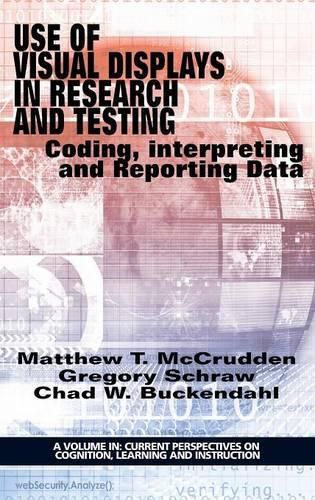Readings Newsletter
Become a Readings Member to make your shopping experience even easier.
Sign in or sign up for free!
You’re not far away from qualifying for FREE standard shipping within Australia
You’ve qualified for FREE standard shipping within Australia
The cart is loading…






This title is printed to order. This book may have been self-published. If so, we cannot guarantee the quality of the content. In the main most books will have gone through the editing process however some may not. We therefore suggest that you be aware of this before ordering this book. If in doubt check either the author or publisher’s details as we are unable to accept any returns unless they are faulty. Please contact us if you have any questions.
Visual displays play a crucial role in knowledge generation and communication. The purpose of the volume is to provide researchers with a framework that helps them use visual displays to organize and interpret data; and to communicate their findings in a comprehensible way within different research (e.g., quantitative, mixed methods) and testing traditions that improves the presentation and understanding of findings. Further, this book includes contributions from leading scholars in testing and quantitative, qualitative, and mixed methods research, and results reporting. The volume’s focal question is: What are the best principles and practices for the use of visual displays in the research and testing process, which broadly includes the analysis, organization, interpretation, and communication of data?
The volume is organized into four sections. Section I provides a rationale for this volume; namely, that including visual displays in research and testing can enhance comprehension and processing efficiency. Section II includes addresses theoretical frameworks and universal design principles for visual displays. Section III examines the use of visual displays in quantitative, qualitative, and mixed methods research. Section IV focuses on using visual displays to report testing and assessment data.
$9.00 standard shipping within Australia
FREE standard shipping within Australia for orders over $100.00
Express & International shipping calculated at checkout
This title is printed to order. This book may have been self-published. If so, we cannot guarantee the quality of the content. In the main most books will have gone through the editing process however some may not. We therefore suggest that you be aware of this before ordering this book. If in doubt check either the author or publisher’s details as we are unable to accept any returns unless they are faulty. Please contact us if you have any questions.
Visual displays play a crucial role in knowledge generation and communication. The purpose of the volume is to provide researchers with a framework that helps them use visual displays to organize and interpret data; and to communicate their findings in a comprehensible way within different research (e.g., quantitative, mixed methods) and testing traditions that improves the presentation and understanding of findings. Further, this book includes contributions from leading scholars in testing and quantitative, qualitative, and mixed methods research, and results reporting. The volume’s focal question is: What are the best principles and practices for the use of visual displays in the research and testing process, which broadly includes the analysis, organization, interpretation, and communication of data?
The volume is organized into four sections. Section I provides a rationale for this volume; namely, that including visual displays in research and testing can enhance comprehension and processing efficiency. Section II includes addresses theoretical frameworks and universal design principles for visual displays. Section III examines the use of visual displays in quantitative, qualitative, and mixed methods research. Section IV focuses on using visual displays to report testing and assessment data.